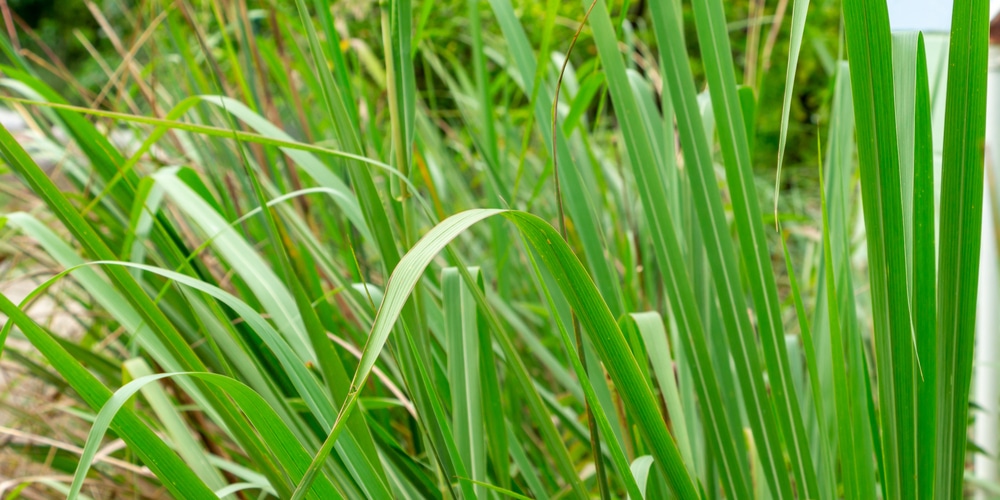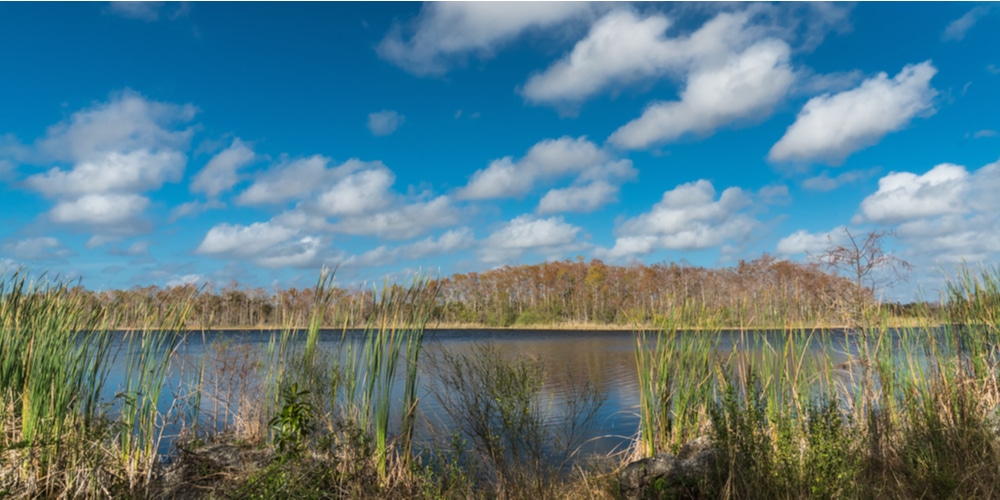Fakahatchee grass, also known as Eastern gamagrass, is an ornamental variety of grass that’s commonly found growing in Florida. This grass is characterized by its long, thin blades that grow up to six feet tall. The flowers of the fakahatchee grass plant are bright yellow, pink, or rust colored and grow in a dense spherical shape. Let’s look at how to grow and care for fakahatchee grass.

What is fakahatchee grass?
Fakahatchee grass has the botanical name Tripsacum dactyloides and is a common sight across Florida. It’s also found in other parts of America. The origin of the name fakahatchee comes from the American Indians who believed that this variety of grass is cursed, as it’s very hard to kill. Despite its name, the fakahatchee grass is not commonly used for weaving baskets or other crafts. However, this grass is a popular choice for landscaping because of its unique color and texture.
Fakahatchee grass is very hearty and can thrive in dry, sandy soil. It can grow pretty tall and generally reaches 4 to 6 feet high. The edges of the leaves are serrated, and blooms are inconspicuous and grow on more towering spikes above the grass clump. There is also a dwarf variety of Fakahatchee grass available for those with a smaller yard. The dwarf grass only grows to a height of about 2 feet.
Fakahatchee grass has been known to provide good cover for wildlife and also works well as part of a flower border. The Byssus Skipper butterfly often lives in or around the grass.
How to care for fakahatchee grass?
If you are looking for an interesting and unique plant to add to your landscape, consider using fakahatchee grass. This grass is easy to grow and can thrive in various climates. Here are some tips to help you care for fakahatchee grass:
Sunlight needs
Perhaps the most critical thing for fakahatchee grass is lots of sunlight. This type of grass thrives best when it has at least six hours a day of direct sunlight, so this should be considered when planting fakahatchee in your landscape. It can also cope with partial shade.
Watering requirements
Fakahatchee grass likes moist soils and needs enough water to thrive. It’s often found growing on the banks of rivers or in swamps, near lakes, or in areas where runoff water is common. The plant is often used to help stop erosion and can be planted along the edge of river banks.
You can plant this grass in a boggy area if your yard suffers from water logging or water the plant at least twice a week, depending on the climate and season.
Fertilization
The best fertilizer for the fakahatchee grass is a slow-release one. Fertilize your fakahatchee grass about three times a year to maintain its health. Alternatively, add some organic matter when planting and mulch around the grass annually.
Soil type
The fakahatchee grass can grow in various soil types, but it prefers sandy or loamy soils.
Temperature requirements
Fakahatchee grass is very tolerant of heat and grows well in USDA zones 8 to 11. It can survive scorching weather but will suffer if the temperature drops below freezing.
Pruning
Pruning is not necessary for the fakahatchee grass. However, if you do decide to prune it, do so in late winter or early spring when dead or damaged pieces of grass can be removed.
Pests and diseases
The fakahatchee grass is resistant to most pests and diseases. However, there are a few that can cause problems for this grass. These include fungal infections and sap-sucking insects. If you notice any of these pests or diseases attacking your grass, it can be treated with neem oil, fungicide, or pesticide.
Propagation
Fakahatchee grass can be propagated by division in the early spring. You can easily divide the clumps to grow new plants.
Conclusion
Fakahatchee grass is a unique and interesting plant that can add beauty and texture to any landscape. With its low care requirements and ability to thrive in almost any kind of soil, this grass is a good choice for landscaping. Growing fakahatchee grass is easy, and once established, this plant will require very little care.
